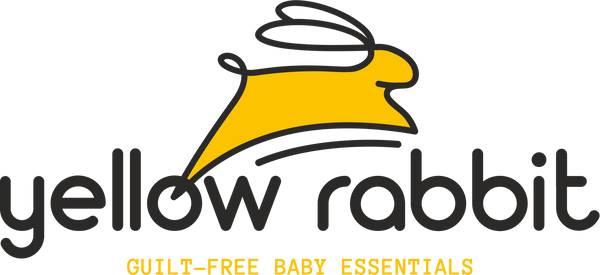As new parents, we all want the best for our little ones - especially when it comes to their comfort, health, and future. Choosing sustainable baby clothes isn't just about saving the planet - it's about protecting your baby's delicate skin, supporting ethical practices, and simplifying your parenting journey. Here are five easy (and effective!) ways to create a sustainable baby wardrobe without sacrificing style or quality.
1. Choose Organic Cotton for a Healthier Start
Babies have ultra-sensitive skin, and the fabrics they wear can make a big difference. Conventional cotton is one of the most pesticide-heavy crops in the world, which means residue from these chemicals can remain on clothing.
Organic cotton, on the other hand, is grown without harmful pesticides or synthetic fertilizers. It's softer, safer, and gentler on baby skin - especially for little ones prone to rashes or eczema. According to the National Eczema Association, up to 20% of children worldwide are affected by eczema, making fabric choice crucial.
At Yellow Rabbit, all baby essentials are crafted from certified organic cotton - perfect for those early months when skin sensitivity peaks.
2. Say No to Harsh Dyes
Did you know that many baby clothes are dyed with chemicals that can trigger allergic reactions or skin irritation? Non-toxic dyes are essential for preventing flare-ups, especially for babies with eczema or allergies.
Look for labels that mention AZO-free or low-impact dyes, which are much safer alternatives. When choosing clothing, it's note just about what touches your baby's skin - it's about what's absorbed through it.
Yellow Rabbit's pieces are colored using non-toxic, baby-safe dyes, making every adorable romper and onesie as safe as it is stylish.
3. Prioritize Eczema-Friendly Designs
Comfort goes beyond fabric. For babies with skin conditions like eczema, clothing design matter. Tags, tight elastic, and synthetic threads can all lead to discomfort or skin damage.
Eczema-safe baby clothing often features:
- Flat seams
- Tag less labels
- Breathable, natural fibers
- Hypoallergenic materials
Yellow Rabbit specializes in eczema-friendly baby clothing that feels like gentle hug- letting your baby explore the world without itchy distractions.
4. Build a Minimalist Baby Capsule Wardrobe
Babies grow fast, overbuying leads to waste. Enter the baby capsule wardrobe: a collection of 10-12 thoughtfully chosen, mix-and -match essentials that simplify daily dressing while staying sustainable.
Benefits of a baby capsule wardrobe:
- Saves time and decision fatigue
- Reduce laundry loads
- Cuts down on unnecessary purchases
- Promotes mindful fashion choices
5. Embrace Preloved & Upcycled Clothing
Buying new isn't the only eco-friendly option. Second-hand baby clothes and upcycled outfits help reduce landfill waste and lessen the environmental burden of fast fashion (which contributes to 10% of global carbon emissions).
Tips for safe second-hand shopping
- Choose gently used items with no fraying or overstretching
- Wash everything in baby-safe detergent before use
- Avoid second-hand shoes or hats (for hygiene and fit reasons)
If you're crafty, upcycle old clothes into bibs, mittens, or soft toys. You can even extend the life of Yellow Rabbit pieces by handing them down to siblings or donating to local parenting groups.
Final Thoughts
A sustainable baby wardrobe is more than a trend - it's a conscious choice that nurtures your baby's health and the planet's future. By choosing organic fabrics, non-toxic dyes, eczema-safe designs, and mindful minimalism, you're setting your little one on a path of wellness and eco-awareness from the start.
Explore Yellow Rabbit's full range of eco-friendly baby fashion at shopyellowrabbit.com - because comfort, style, and sustainability should go hand-in-hand.

